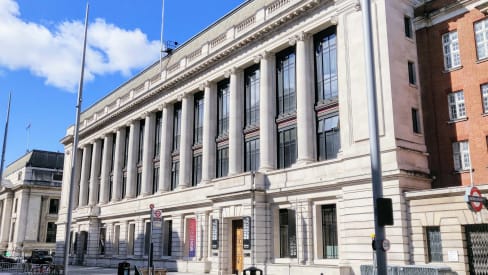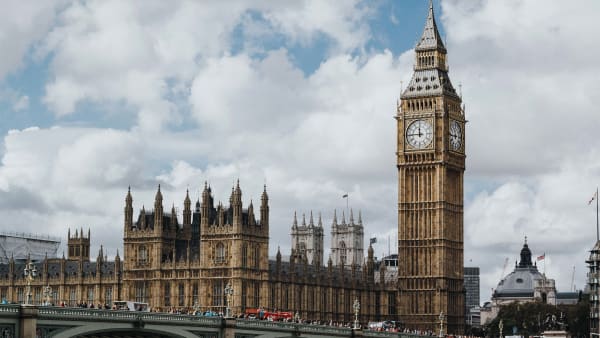Science Museum
London’s Science Museum is one of the most unique visits in the city, with interactive galleries, hands-on activities and displays for all ages.
Science Museum
London’s Science Museum is one of the most unique visits in the city, with interactive galleries, hands-on activities and displays for all ages.
The Science Museum is one of London’s most important and complete museums. Its exhibitions are dedicated to the many areas of study related to science, technology, and industry, with sections dedicated to fields like computing, medicine, space travel, climate, and telecommunications.

At the Science Museum you’ll find a wide variety of object galleries, interactive galleries, screenings, temporary exhibitions and displays, simulators, and activities. The scope and diversity of approaches make the museum one of the most interesting and exciting cultural venues in London, particularly so if you are travelling with children.
What’s inside the Science Museum
The museum is divided into two buildings, the main one and the Wellcome Wing. In the main building, dedicated to both permanent galleries and temporary exhibitions, you can find the following areas.
- Energy Hall: dedicated to steam engines and the industrial revolution.
- Exploring Space: a gallery dedicated to space exploration and the advances it brought to telecommunications.
- Making the Modern World: a collection of objects representing various technological and industrial breakthroughs in the last couple of centuries.
- The Secret Life of the Home: a collection dedicated to the development of household appliances.
- Medicine, the Wellcome Galleries: an exhibition spanning the history of medicine from ancient times to the present day.
- The Clockmakers Museum: this section constitutes the oldest clock and watch museum in the world.
- Mathematics, The Winton Gallery: it explores the role of mathematics in shaping the modern world.
- Information Age: a gallery dedicated to communication and computing.
- Wonderlab, The Equinor Gallery: an area dedicated to live experiments and shows.
- Flight: this gallery explores the development of aviation in aero-engines in the 20th century.
- Fly zone: a jet flight simulator.
- Science City 1550-1800, The Linbury Gallery: a gallery dedicated to London’s scientific and commercial transformation between 1550 and 1800.
- Technicians, The David Sainsbury Gallery: an interactive space dedicated to the importance of technicians in science and technology.
- The Garden: an interactive gallery dedicated to children aged 3-6.
The Wellcome Wing, accessible at ground level, is an extension of the original Science Museum building. Here are its permanent galleries and areas.
- Engineer your Future: an interactive gallery introducing younger visitors to the problem-solving and teamwork skills needed to be an engineer.
- IMAX, The Ronson Theatre: an IMAX theatre showing educational films.
- Who Am I?: a gallery dedicated to hands-on exhibits about human personality, intelligence and language.
- Pattern Pod: an interactive multisensory area dedicated to patterns of the world.
Location
Exhibition Road, South Kensington, London SW7 2DD.
The Science Museum is located in one of London’s most upmarket district, South Kensington. The area, just north of Chelsea and west of Knightsbridge, is home to many well-known cultural institutions.
Just across the road from the Science Museum is the Victoria and Albert Museum and behind it is the Natural History Museum. Down the road, you can find the Imperial College and the Royal Albert Hall. Crossing the street, continuing north, are the Kensington Gardens and Hyde Park.
Tickets and price
Entry to London’s Science Museum is always free for everybody. However, tickets still need to be pre-booked to be able to visit the museum. You can get your Science Museum tickets on the institution’s website .
Schedule
The Science Museum is open every day from 10:00 am to 6:00 pm, with visitors being allowed to enter until 45 minutes before closure.
However, the Science Museum often hosts events and carries out restoration and expansion works, so we recommend you check the museum’s page for up-to-date information about closures .
| Day |
|---|
| Mon-Sun |
| Day | Opening time | Last admission | Closure |
|---|---|---|---|
| Mon-Sun | 10:00 am | 5:15 pm | 6:00 pm |
Transport
To reach the Science Museum in London, you can take the Tube lines District, Circle, or Piccadilly and get off at South Kensington or Gloucester Road stations, they are pretty much equally distant from the museum.
Alternatively, there are also plenty of buses that stop all around the Science Museum. Bus routes 70 and 360 will drop you off the closest to the Science Museum, but lines 14, 74, 345, 414, 430 and C1 are also good options.
You can find a summary of the public transport options in the table below.
| Method |
|---|
| Lines |
| Stops |
| Method | Underground | Bus |
|---|---|---|
| Lines | District, Circle, Piccadilly | 14, 70, 74, 345, 360, 414, 430, C1 |
| Stops | South Kensington, Gloucester Road | - |
It’s also possible to reach the Science Museum by cab, but we don’t recommend it, since traffic in central London usually means waiting for a long time and paying an expensive fare.
Nearby sights
Natural History Museum - just behind the Science Museum.
Victoria and Albert Museum - across the street from the Science Museum.
Imperial College London - opposite the Science Museum.
Royal Albert Hall - 550 m (0.3 miles) north, 6-minute walk.
Hyde Park - 600 m (0.4 miles) north, 8-minute walk.
Kensington Gardens - 900 m (0.6 miles) northwest, 11-minute walk.
Harrods - 1.1 km (0.7 miles) east, 14-minute walk.















